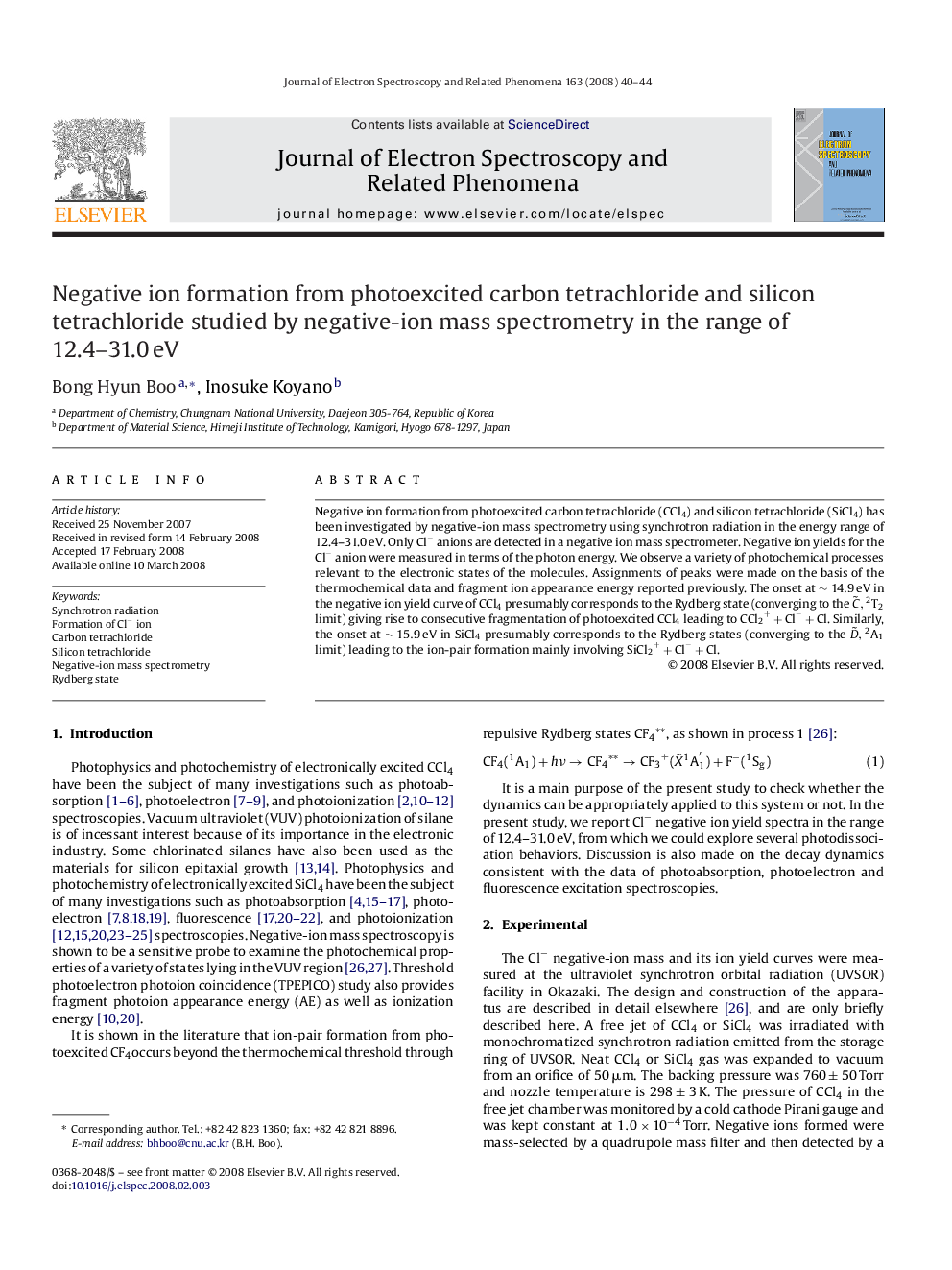| Article ID | Journal | Published Year | Pages | File Type |
|---|---|---|---|---|
| 5396893 | Journal of Electron Spectroscopy and Related Phenomena | 2008 | 5 Pages |
Abstract
Negative ion formation from photoexcited carbon tetrachloride (CCl4) and silicon tetrachloride (SiCl4) has been investigated by negative-ion mass spectrometry using synchrotron radiation in the energy range of 12.4-31.0Â eV. Only Clâ anions are detected in a negative ion mass spectrometer. Negative ion yields for the Clâ anion were measured in terms of the photon energy. We observe a variety of photochemical processes relevant to the electronic states of the molecules. Assignments of peaks were made on the basis of the thermochemical data and fragment ion appearance energy reported previously. The onset at â¼14.9Â eV in the negative ion yield curve of CCl4 presumably corresponds to the Rydberg state (converging to the CË,T22 limit) giving rise to consecutive fragmentation of photoexcited CCl4 leading to CCl2++Clâ+Cl. Similarly, the onset at â¼15.9Â eV in SiCl4 presumably corresponds to the Rydberg states (converging to the DË,A21 limit) leading to the ion-pair formation mainly involving SiCl2++Clâ+Cl.
Related Topics
Physical Sciences and Engineering
Chemistry
Physical and Theoretical Chemistry
Authors
Bong Hyun Boo, Inosuke Koyano,
